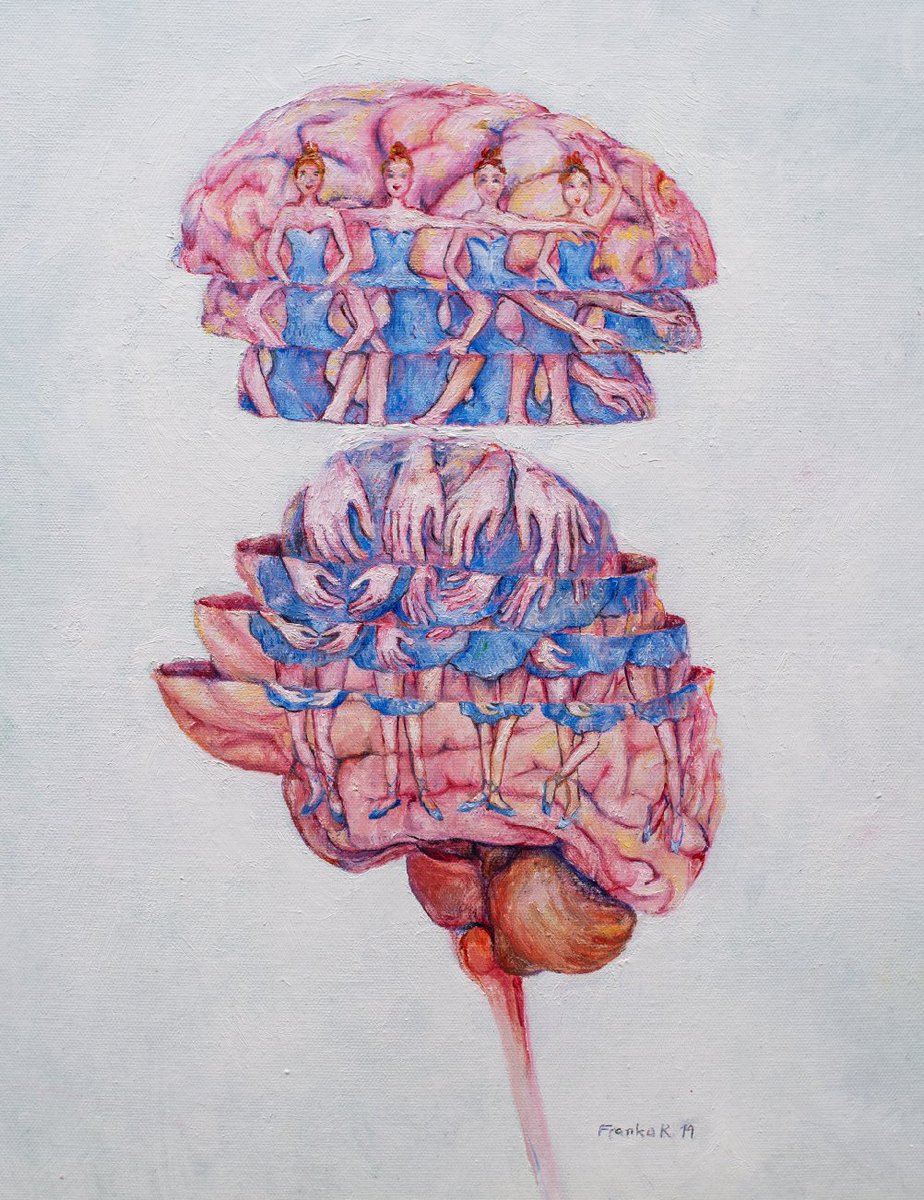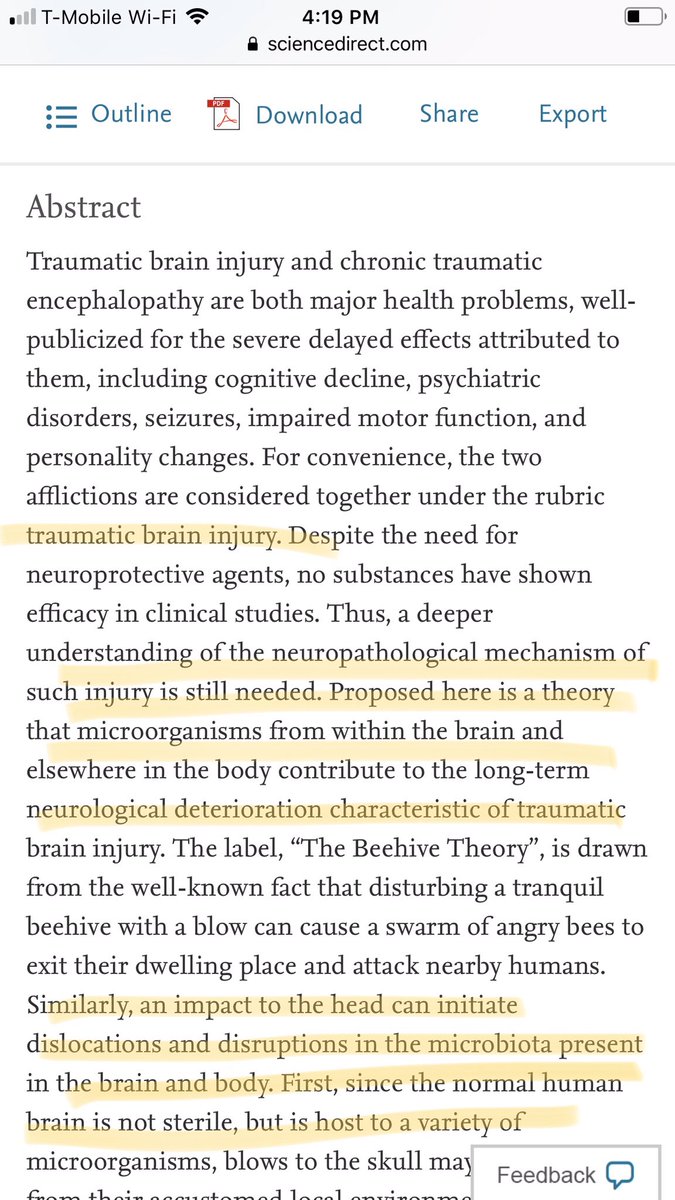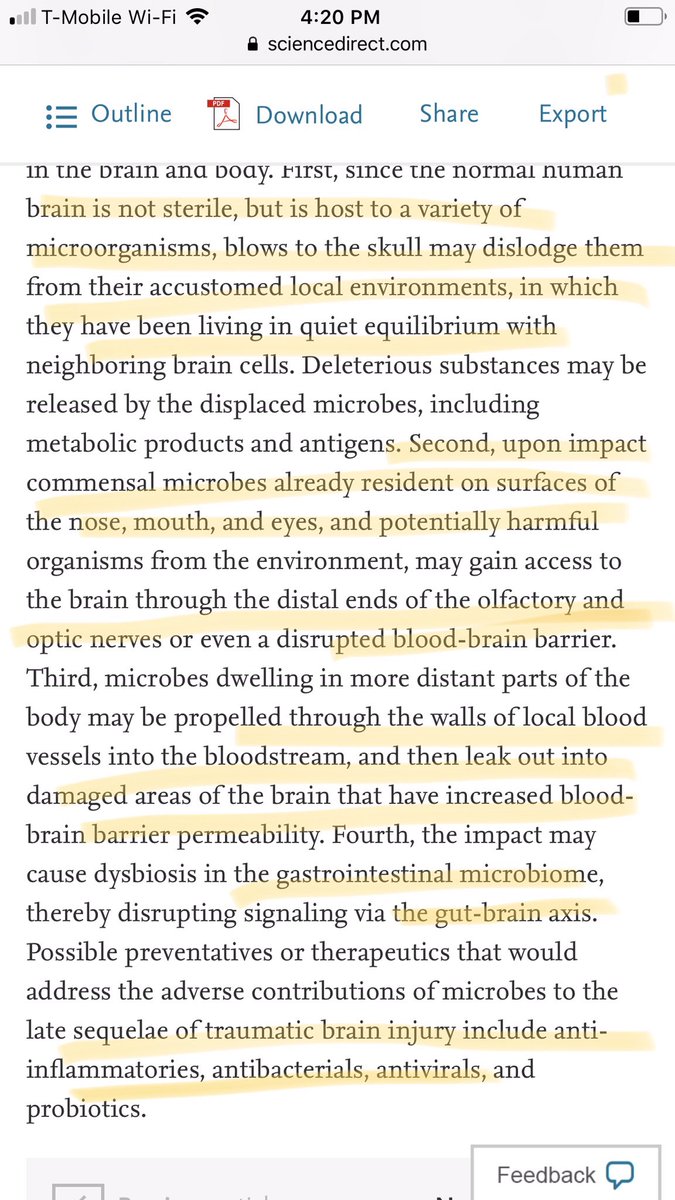@salazarori and I address this question in our latest from @Zimmer_Lab: “Nested neuronal dynamics orchestrate a behavioral hierarchy across timescales”
Link @NeuroCellPress:
cell.com/neuron/fulltex…
Thread 1/
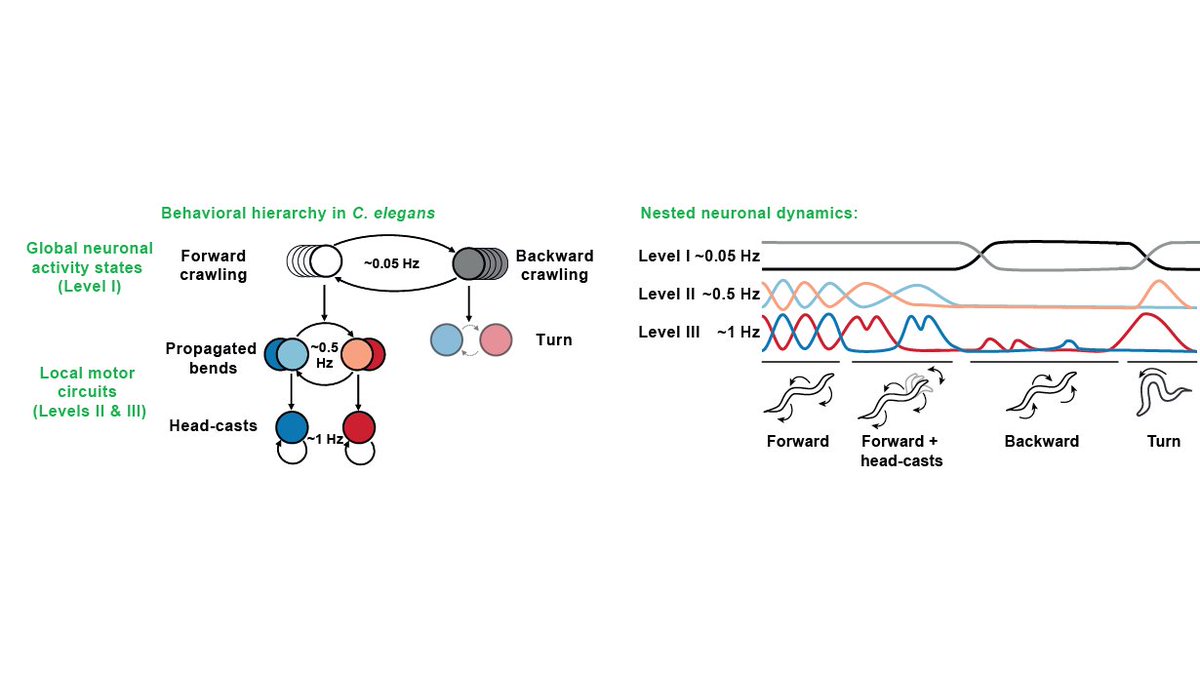
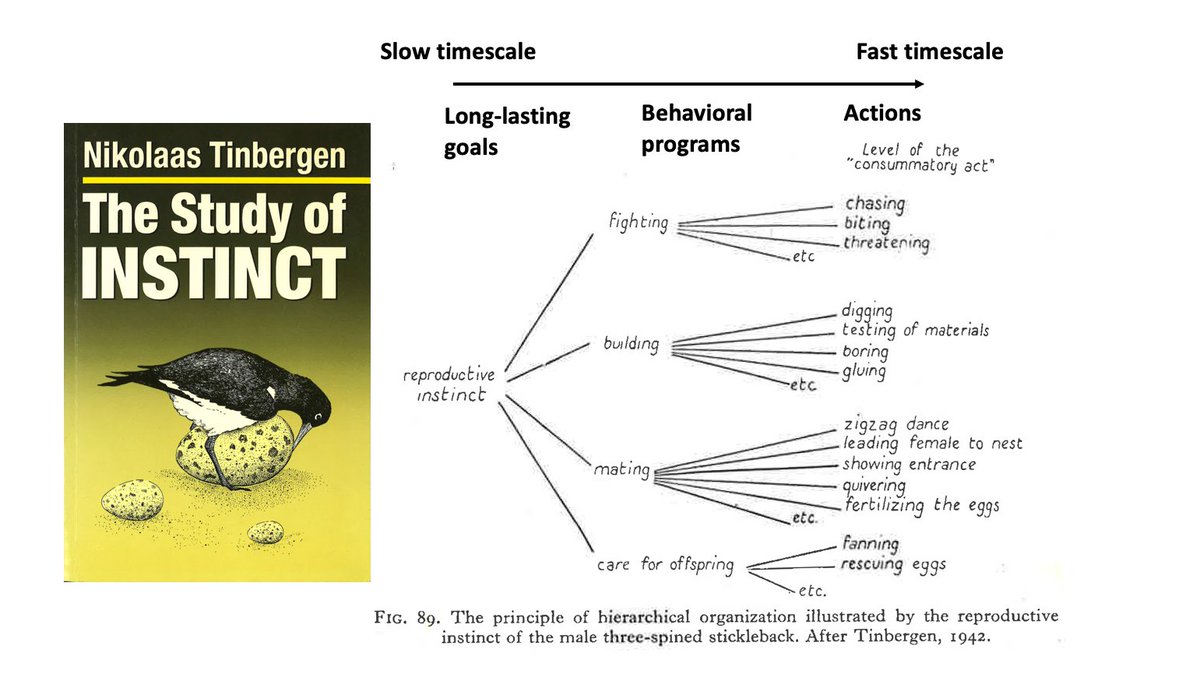
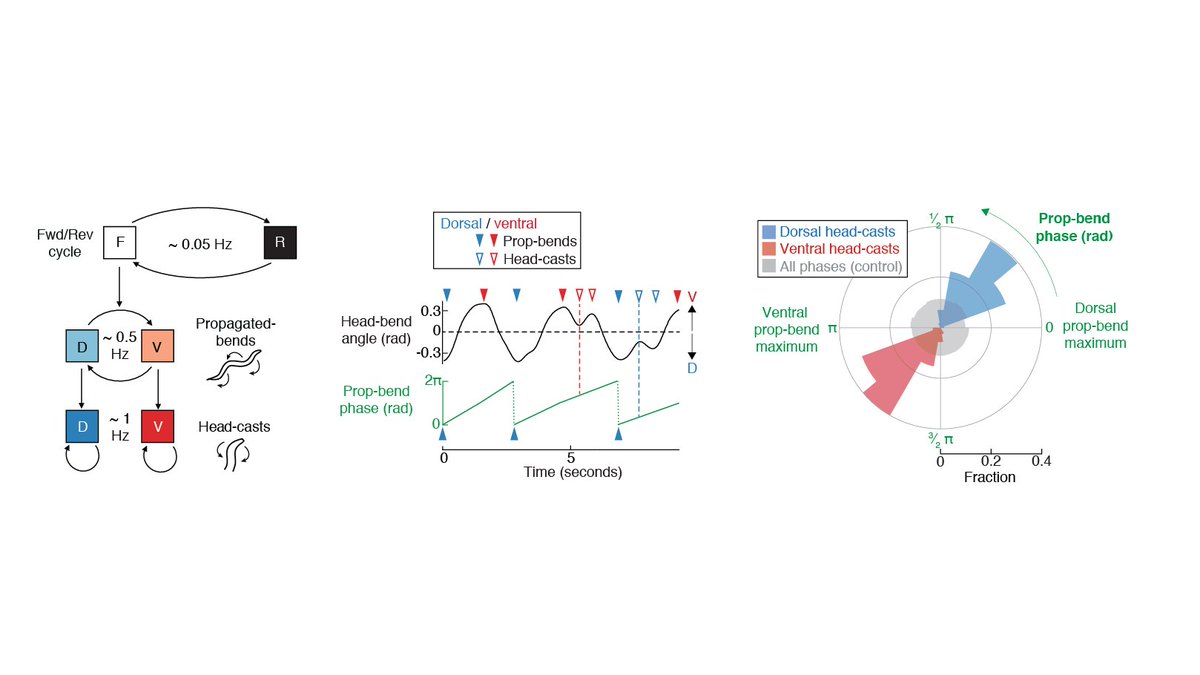
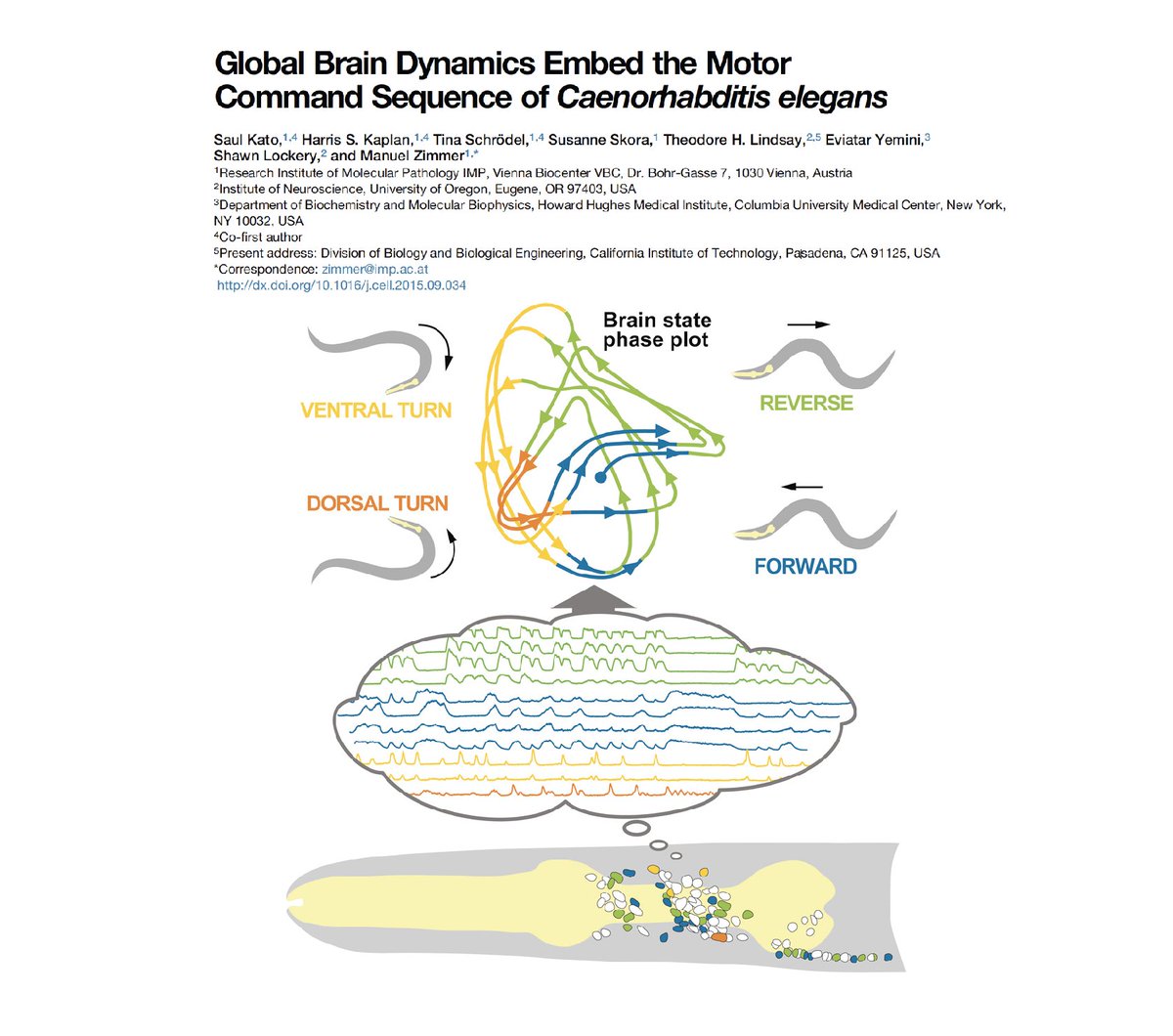
• B-MNs drive prop-bends (Hierarchy Level 2)
• SMDD and SMDV drive dorsal and ventral head-casts (Level 3)
6/
To do so, we imaged B-MN DB02, SMDD, and SMDV in moving animals. 7/
SMDs acted either as motor neurons or interneurons, depending on the higher-level state! 8/
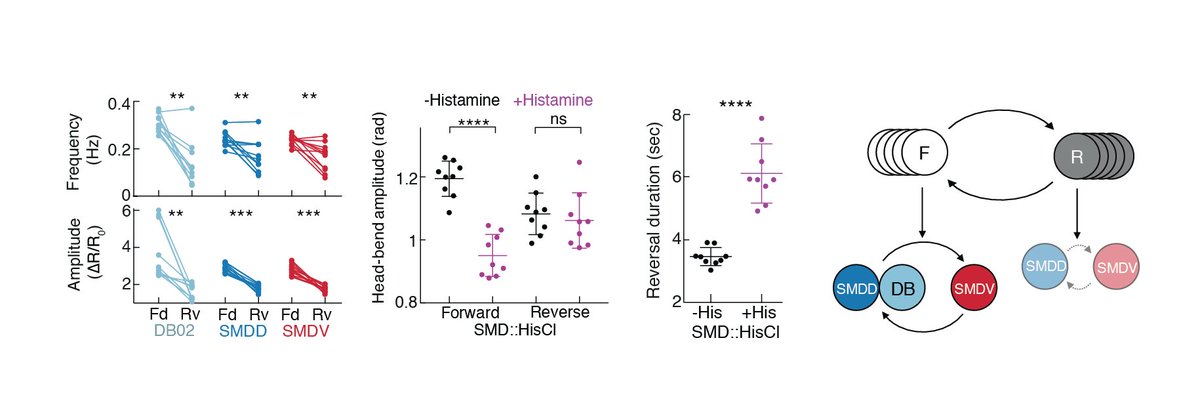
• During prop-bends (Level 2), SMDD and SMDV showed alternating activity peaks.
• During lateralized head-casts (Level 3), only one of the two SMDs oscillated.
9/
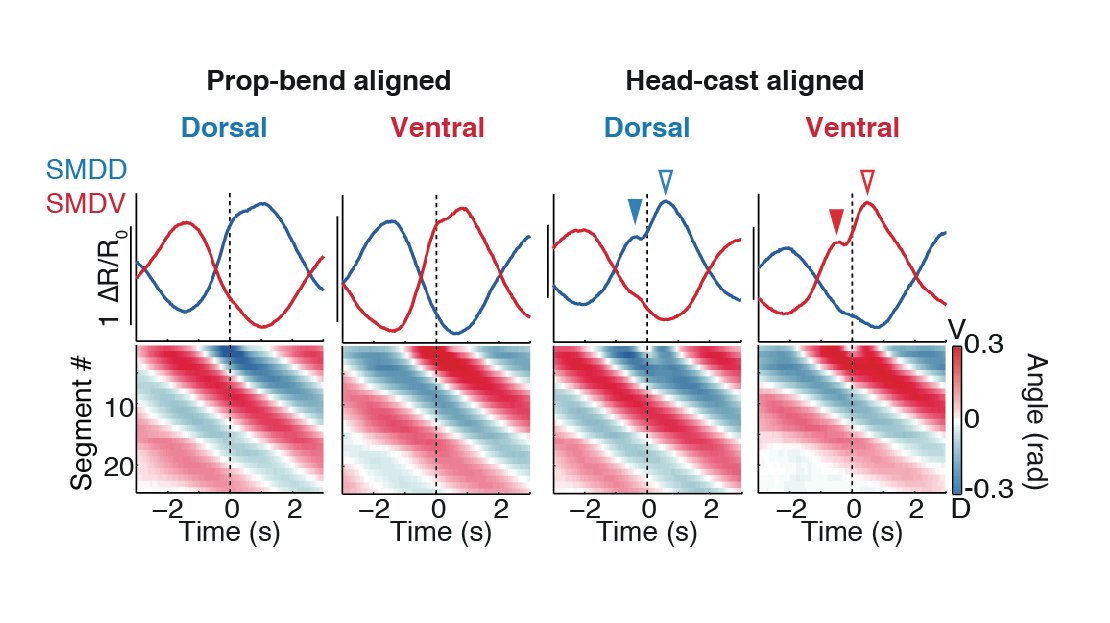
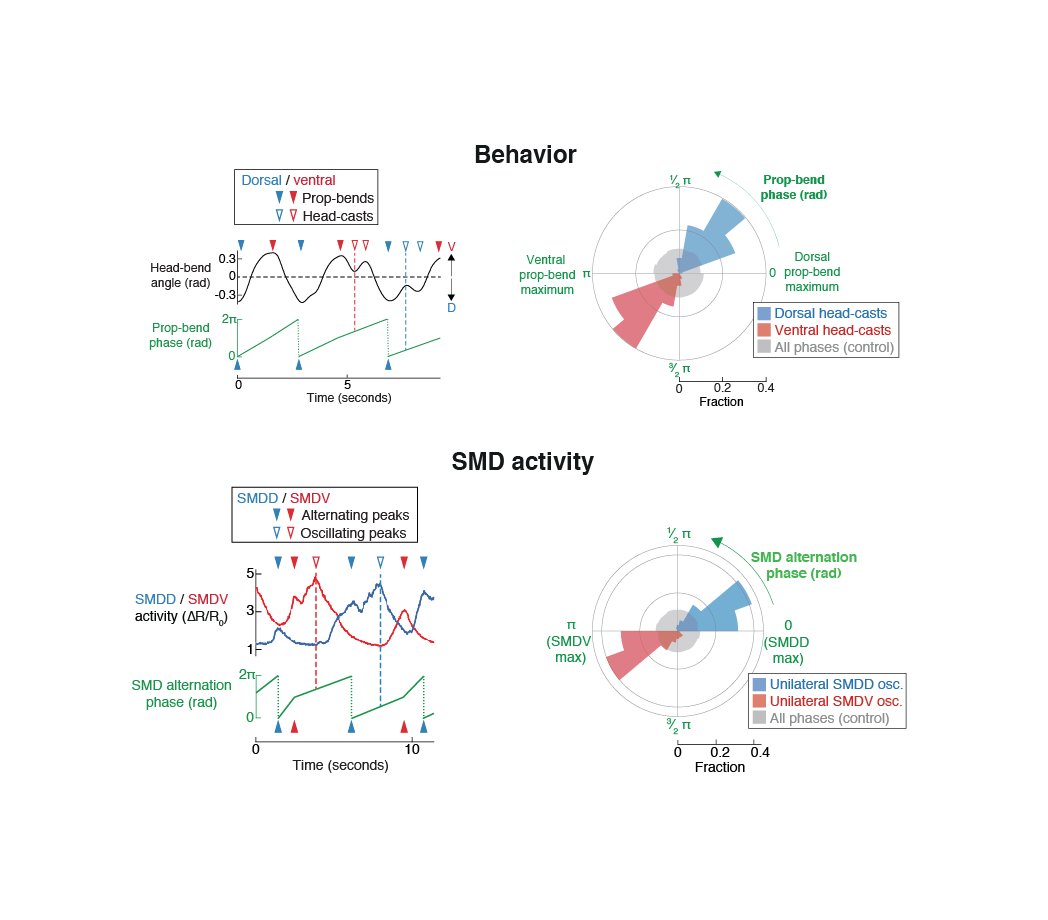
Well, we found that SMDs were phase-nested even in immobilized animals! This suggests that SMD phase-nesting drives behavioral phase-nesting, not vice versa.
11/
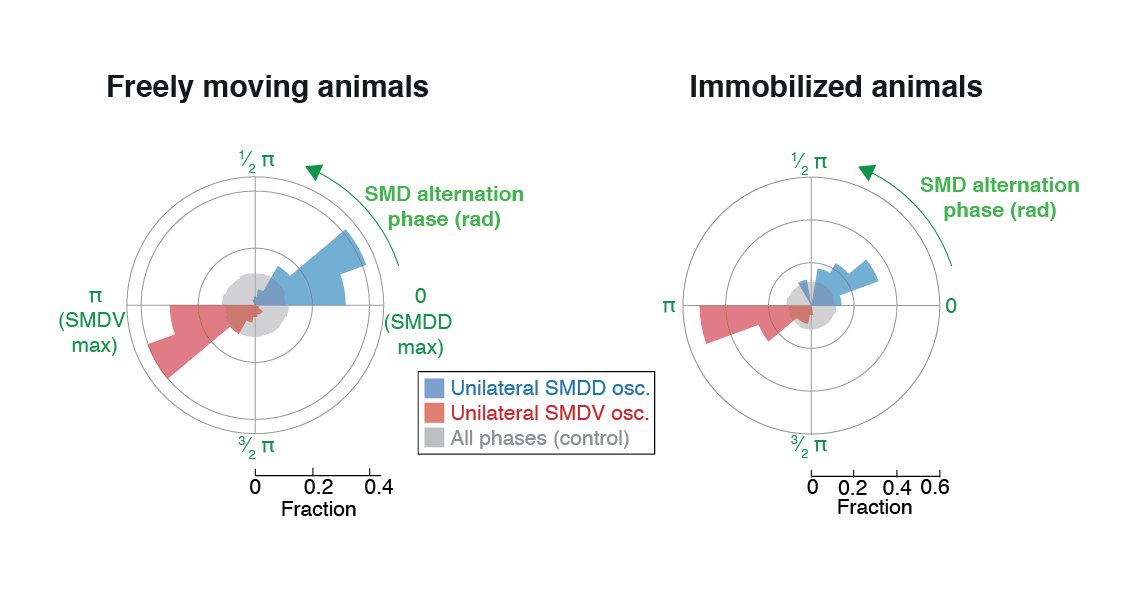
We conclude that nested neuronal activity patterns are a repeated dynamical motif of the worm’s nervous system, which together implement a behavioral hierarchy. 13/
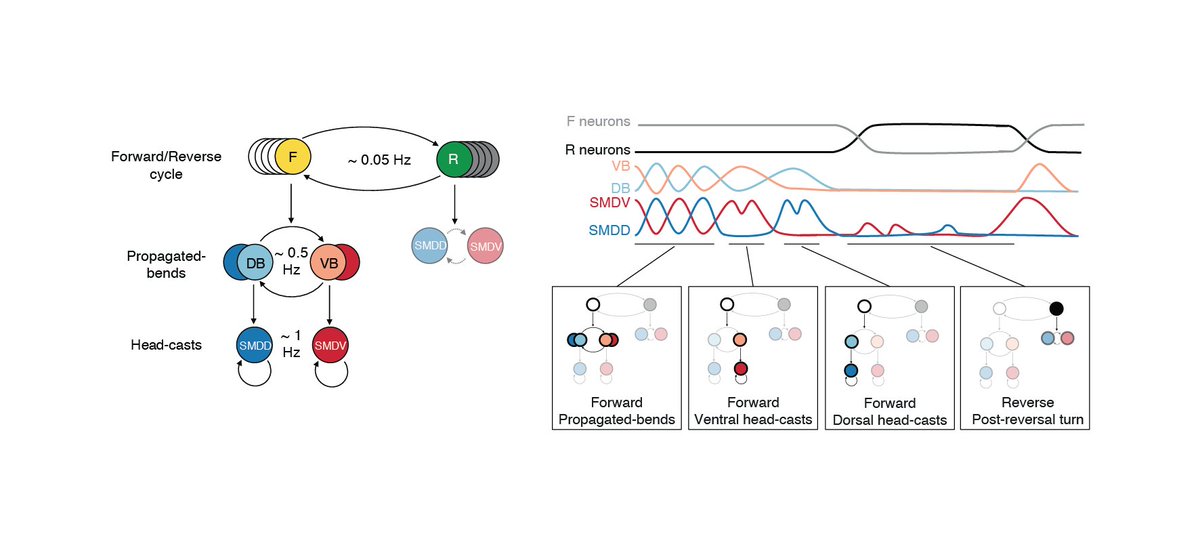
Also, check out this interpretation of our work by Viennese artist Franka Rothaug! See more at frankarothaug.com.
14/14
